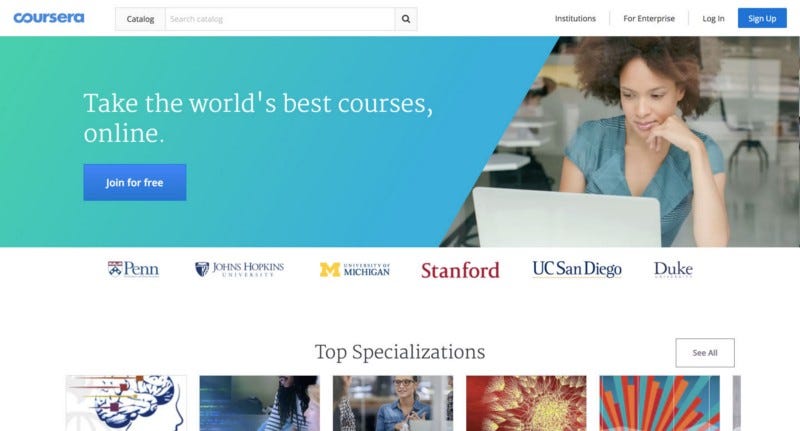Crafting an Engaging LearnTube Experience: A UX Case Study
Table of contents
- Introduction
- Timeline: 2 days
- The Overview
- Objectives
- User research
- Market Research
- Implications for LearnTube Redesign:
- What I did and Why I did?
- What I could have done different?
- Feature Enhancement for Higher Conversion and Engagement:
- User Engagement and Retention Strategies:
- Reflecting on Alternative Approaches:
- Advanced Recommendation Engine for Personalized Learning Journeys:
- This strategic approach not only enhances the user experience but also aligns with business goals, emphasizing the importance of user engagement, conversion, and personalized interactions in the LearnTube platform.
- Thank you everyone for being part of this journey ❤
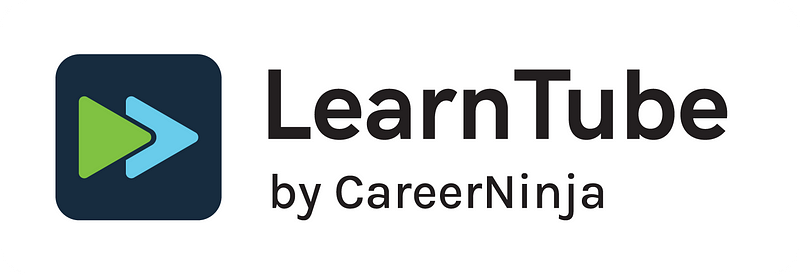
Introduction
LearnTube, an AI-driven personalized learning platform, has grown rapidly with 4 Lakh learners across 64 countries. However, the platform’s success demands a user-centric redesign to enhance accessibility, engagement, and outcomes.
Timeline: 2 days
The Overview
🎓 User signs up on LearnTube for a learning adventure.
🏆 Completes initial lessons, but the magic fades, and they vanish.
🔗 Solution: Introduce Streaks, daily rewards, and a recommendation engine.
📚 Dashboard showcases streaks, rewards glitter, and recommendations guide.
📜 Certificates cast doubt; Solution: QR codes, online verification, and Skill Graph.
🌐 Skill Graph becomes a tapestry of earned certificates, dispelling doubts.
🏆 Bonus: Add a leaderboard for friendly competition and an AI chatbot guide.
🚀 LearnTube transforms into an enchanting realm where learning is a continuous journey.
Objectives
The primary goal is to improve user experience, making self-learning more accessible and engaging, leading to better outcomes. The redesign aims to streamline navigation, optimize content discovery, and enhance user interaction.
User research
User Personas
Persona 1: The Career Starter — Aanya
Background: Recent graduate. Entry-level professional seeking career opportunities.
Motivations: Aanya is motivated to gain industry-relevant skills for job placement.
Challenges: Struggles with navigating the platform and finding suitable courses.
Goals: Seeks easy-to-navigate interfaces and practical, career-focused courses.
Persona 2: The Skill Upgrader — Rahul
Background: Mid-career professional in marketing.
Motivations: Rahul wants to upskill to stay competitive in his field.
Challenges: Desires more interactive content and personalized learning paths.
Goals: Values courses that directly impact his current job and future career.
Persona 3: The Busy Professional — Priya
Background: Experienced professional in data science.
Motivations: Priya is looking for flexible learning options to fit her busy schedule.
Challenges: Prefers bite-sized content for on-the-go learning.
Goals: Seeks courses with quick, tangible outcomes and industry recognition.
Market Research
Competitive Analysis
1. Udacity:

Strengths:
Specialized nanodegree programs with industry partnerships.
High-quality video content and mentor support.
Weaknesses:
Premium pricing may limit accessibility.
Limited free course offerings.
2. Coursera:
Strengths:
Diverse course offerings from top universities and industry leaders.
Robust certification programs recognized by employers.
Weaknesses:
Some courses can be lengthy, impacting time-sensitive learners.
Frequent platform changes may affect user experience.
3. Khan Academy:
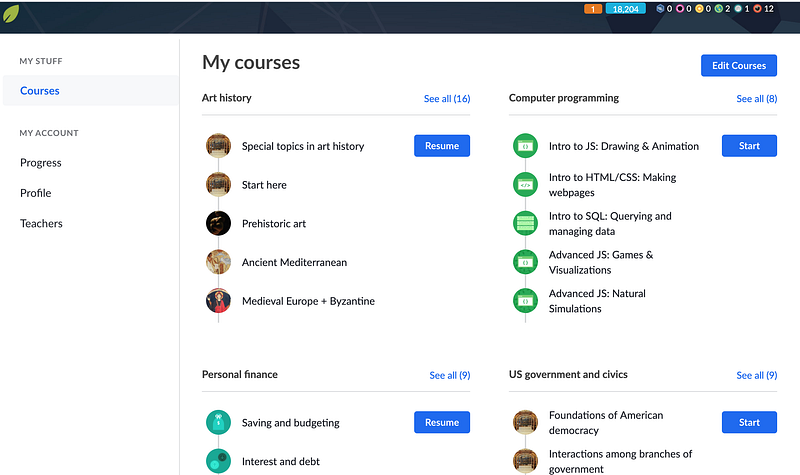
Strengths:
Extensive library of free educational content.
Well-structured learning paths for various subjects.
Weaknesses:
Primarily focused on K-12 education, not as career-centric.
Limited industry partnerships for placement support.
4. LinkedIn Learning:
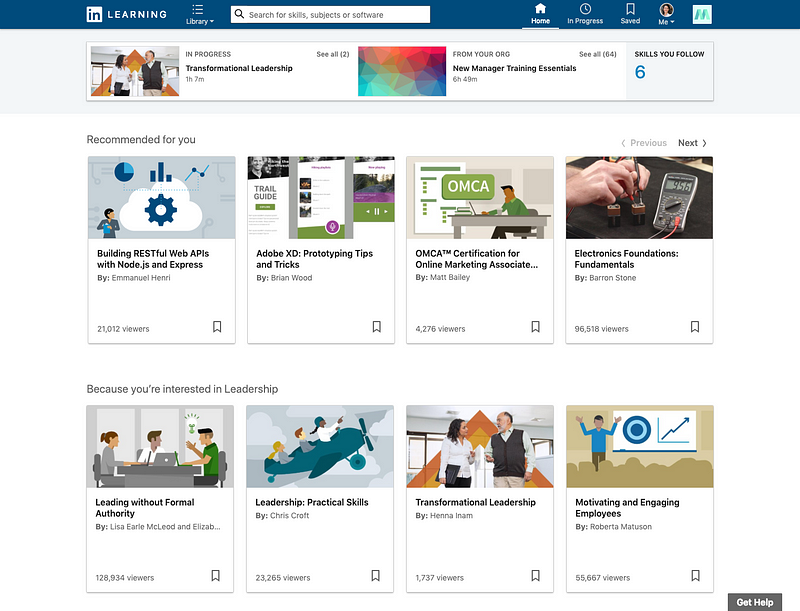
Strengths:
Integration with LinkedIn profiles for professional networking.
High-quality video content and courses led by industry experts.
Weaknesses:
Limited free content; subscription-based model.
Emphasis on short courses, may lack in-depth learning paths.
5. Skillshare:

Strengths:
Community-driven platform with a focus on creativity.
Affordable subscription model.
Weaknesses:
Limited emphasis on career-oriented skills.
Quality of content can vary.
Implications for LearnTube Redesign:
Differentiation:
- LearnTube can leverage its industry partnerships and 100% placement support as a key differentiator.
Content Accessibility:
- Emphasize a balance between free and premium content to cater to a wider audience.
Interactive Learning Paths:
- Incorporate features that provide hands-on and interactive learning experiences to compete with platforms like Udacity.
Mobile Accessibility:
- Prioritize a mobile-friendly design to align with the on-the-go learning preferences observed in the user personas.
Strategic Partnerships:
- Strengthen existing partnerships and establish new ones to enhance the platform’s credibility.
Our ideation process focused on maintaining simplicity while injecting necessary visual appeal and engagement features:

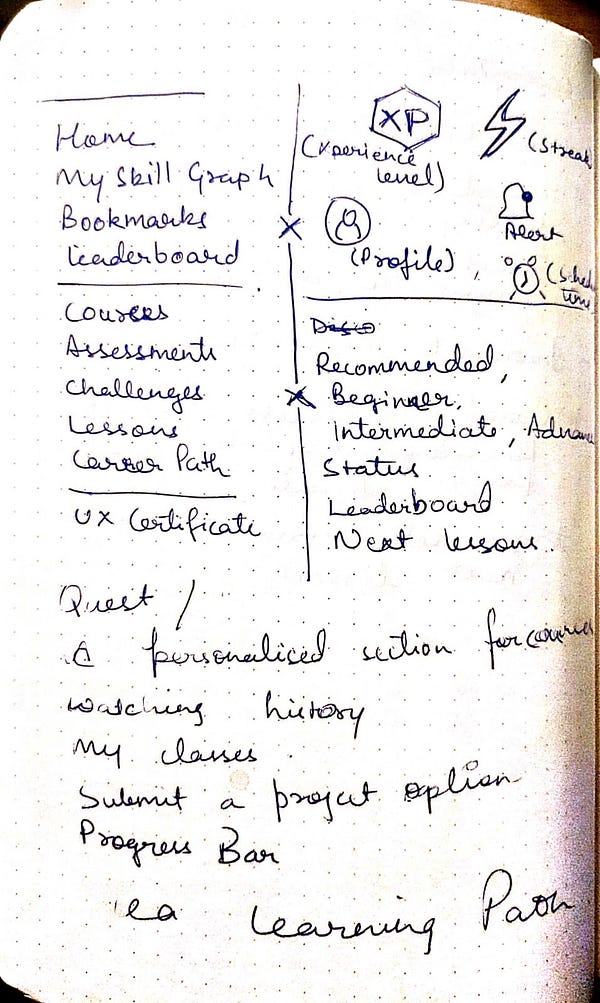
Gamification Elements:
Streaks for daily engagement.
Leaderboard for friendly competition.
Introduction of Leagues.
Certification Enhancement:
QR codes and online verification.
Skill Graph showcasing earned certificates.
Microinteraction in certificates to enhance design appeal.
Validate your certificate in one click.
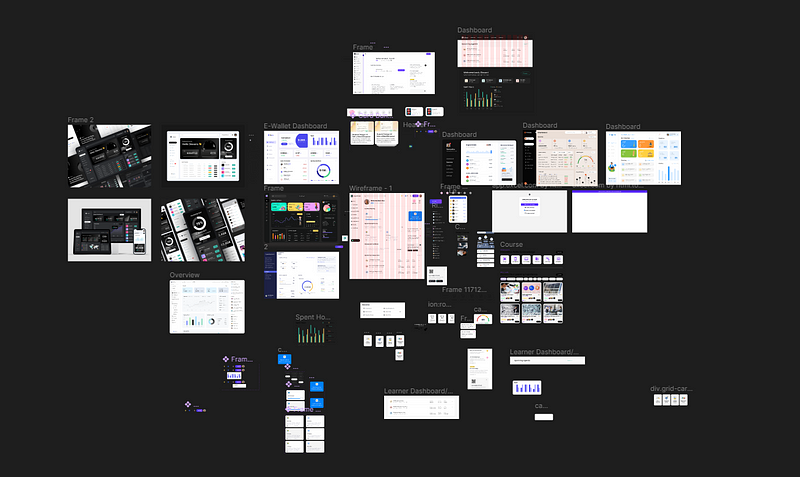
Ideaboard
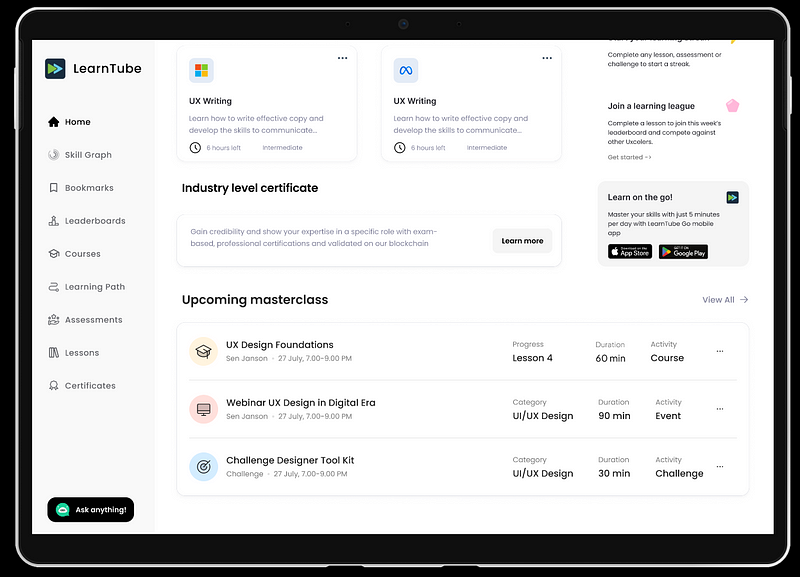
What I did and Why I did?
Simplicity and Focus:
The core principle guiding this redesign is simplicity. Extraneous details have been meticulously pruned to create an uncluttered, intuitive interface. This deliberate decision ensures users can seamlessly navigate the platform without unnecessary scrolling, reducing the risk of distraction and enhancing overall usability.
Micro-Interactions and Subtle Design:
Recognizing the power of subtlety, the design incorporates micro-interactions. These nuanced elements add a layer of interactivity, making the platform more dynamic without overwhelming the user. The subtlety of the design serves as an invitation, encouraging users to explore without feeling inundated by information.
Gamification for Engagement:
To transform learning into an enjoyable journey, gamification takes center stage. The addition of gamified elements, such as streaks and leaderboards, injects an element of fun and friendly competition. This strategy aims to captivate users, keeping them engaged over an extended period. The leaderboard, in particular, provides a compelling reason for users to return consistently as they vie for the top spot, fostering a sense of accomplishment.
Streak Feature for Daily Engagement:
The introduction of the streak feature is a strategic move to cultivate a daily learning habit. By incentivizing users to return each day, the platform becomes an integral part of their routine. This habitual engagement not only contributes to consistent learning but also establishes a deeper connection between the user and the platform.
Certification Verification:
Recognizing the importance of trust in the educational space, a certificate verification feature has been incorporated. This enhances the credibility of LearnTube certificates, addressing user doubts and reinforcing the value of the learning journey. It not only assures users of the authenticity of their achievements but also contributes to a more trustworthy learning environment.
What I could have done different?
Feature Enhancement for Higher Conversion and Engagement:
Dynamic Plan Switching: Idea: Introduce a user-friendly feature allowing seamless switching between plans and straightforward purchase options to enhance the conversion rate and attract high-value customers.
Potential Impact: Simplifying the plan-switching process promotes a more flexible and personalized learning experience, potentially increasing user satisfaction and revenue.
User Engagement and Retention Strategies:
Smart Reminder System: Idea: Implement a reminder system, leveraging email and WhatsApp notifications, to gently prompt users when it's time to log in and resume their courses. Additionally, send reminders to inactive users and those who haven't been active for a few days.
Potential Impact: By keeping users engaged and aware of their learning schedule, this feature aims to enhance user retention and foster consistent engagement with the platform.
Feedback Prompt after Milestones: Idea: Trigger feedback requests when users reach significant milestones, such as completing a certain number of hours on the platform. This ensures feedback is collected at moments of achievement, increasing the likelihood of positive responses.
Potential Impact: Gathering feedback strategically can provide valuable insights, enhance the user experience, and highlight areas for improvement.
Tailored Premium Offers: Idea: Identify users on free plans who consistently and extensively use the platform. Offer them personalized and enticing deals on premium plans as an incentive to upgrade.
Potential Impact: By recognizing and rewarding active free users, this approach aims to increase conversion rates and move users into premium plans, contributing to revenue growth.
Reflecting on Alternative Approaches:
Reflection: While the current UX redesign focused on improving navigation, interactivity, and mobile accessibility, introducing these engagement and conversion features could have further amplified user satisfaction, platform monetization, and long-term user retention.
Learnings: Iterative improvements based on user feedback and data analysis are crucial. Future iterations could explore these feature enhancements to address specific user needs, drive business objectives, and provide a more comprehensive and dynamic learning experience.
Advanced Recommendation Engine for Personalized Learning Journeys:
Tailored Learning Paths: Idea: Develop an advanced recommendation engine that engages users in a personalized onboarding process. By understanding their goals, objectives, and timeframe, the system will suggest tailored learning paths and plans best suited to individual needs.
Potential Impact: Creating a personalized onboarding experience enhances user satisfaction and increases the likelihood of users finding courses and plans aligned with their specific aspirations. This not only improves user engagement but also contributes to long-term retention.
Dynamic Plan Recommendations: Idea: Based on user inputs and preferences, dynamically recommend plans that cater to different needs. For example, a fourth-year student looking for job assistance may be directed towards a plan with strong placement support, while a first-year student interested in exploration may receive recommendations for fundamental courses.
Potential Impact: This feature ensures that users are guided towards plans that align with their current educational phase and career goals, optimizing their experience and increasing the chances of plan adoption.
Progressive Goal Setting: Idea: Implement a progressive goal-setting mechanism during the onboarding process. Users can define short-term and long-term objectives, enabling the system to continuously adapt and refine its recommendations based on their evolving needs.
Potential Impact: Encouraging users to set and revisit their goals ensures that the platform's recommendations remain relevant and meaningful, fostering a sense of progression and achievement.
While the initial redesign addressed user navigation and engagement, integrating an advanced recommendation engine takes personalization to the next level. This approach goes beyond reacting to user behavior, proactively guiding users based on their unique aspirations. Incorporating a recommendation engine aligns with the vision of making learning accessible, engaging, and outcome-driven. This strategic addition not only enriches the user experience but also positions LearnTube as a platform that genuinely cares about each user's educational journey.
This strategic approach not only enhances the user experience but also aligns with business goals, emphasizing the importance of user engagement, conversion, and personalized interactions in the LearnTube platform.
Thank you everyone for being part of this journey ❤

